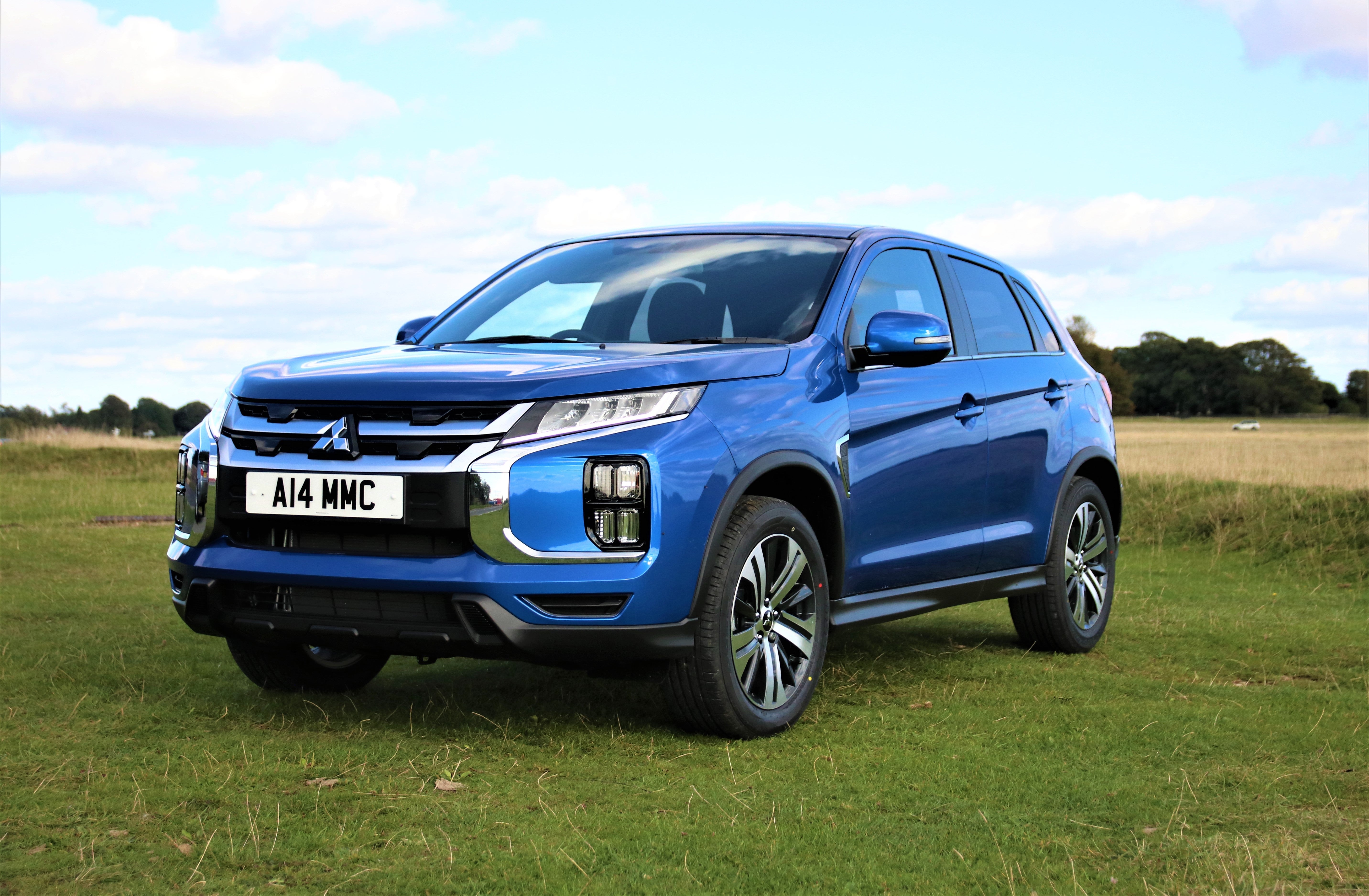Mitsubishi ASX (2010-2021) Review
Written by Ivan Aistrop
Quick overview
Pros
- Affordable as a used car
- Available with four-wheel drive
- Half-decent amount of standard kit
Cons
- Very lacklustre to drive
- Refinement is particularly poor
- Plasticky interior
Overall verdict on the Mitsubishi ASX
“Most compact SUV buyers are looking for nothing more than a stylish and civilised family car, and in that regard, the Mitsubishi ASX is comprehensively outgunned in a number of areas by many of the immensely popular cars that it competes with. However, if you genuinely need a dose of four-wheel-drive ability, and you need it on a tight budget, then the ASX could be a very shrewd choice.”
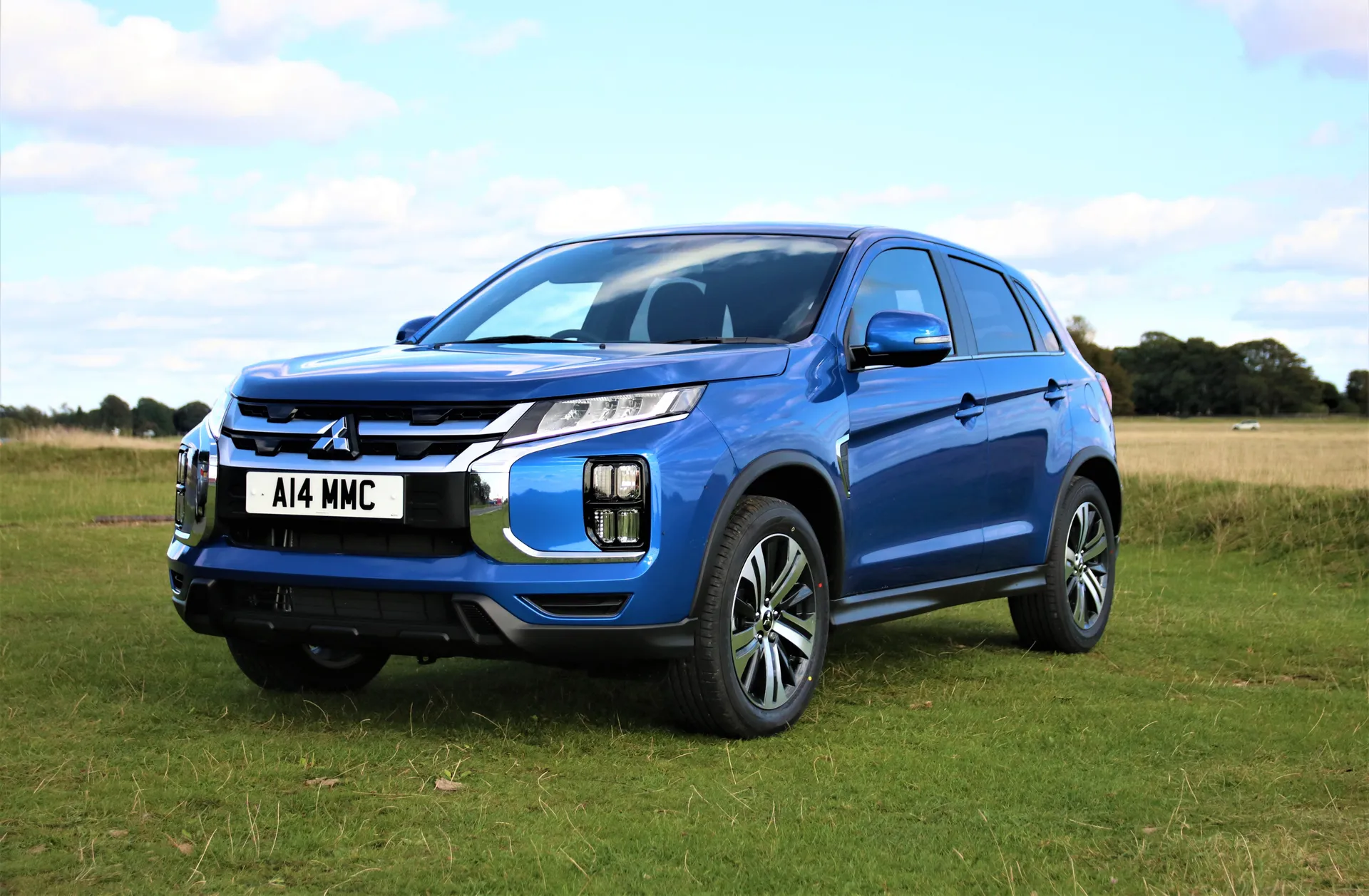
As of 2021, Mitsubishi no longer sells cars in the UK, and when you consider some of the iconic machinery that the company has produced over the years - the rough-and-tumble Shogun 4x4, the no-nonsense L200 pickup truck, and any given generation of the incredible rally-bred Lancer Evo - the ASX crossover isn’t a car you might immediately lament the passing of.
And why should you? As a compact SUV, it’s in competition with some of the most popular cars anywhere in the car market, huge-sellers like the Nissan Qashqai, Kia Sportage, Hyundai Tucson and Seat Ateca.
And let’s be honest, the ASX was never all that brilliant an offering, even when it was brand-spanking new. Practicality was merely so-so, build quality was solid yet uninspiring, its road manners were decidedly lacklustre, performance was limited, but worse than all that, the car’s refinement was woeful. And by the time it was withdrawn from sale in 2021, having been released way back in 2010, it was also starting to really feel its age.
All of this talk might not have you immediately making a beeline to our classifieds to conduct a search for the ASX, then, but to rule it out entirely would be missing a trick. You see, as a new car, it was fairly comprehensively outgunned in a vast number of areas by a vast number of rivals. However, now that it’s only available as a used car, the picture changes a bit.
The rather unloved status of the ASX means that prices on the used market are pretty keen, so bargains are there for the taking. And the car isn’t entirely without merit in other ways, either. Standard equipment levels aren’t at all bad, the car should prove to be very reliable, and although not a class-leader by any stretch, there’s enough practicality and versatility on offer to satisfy a small family.
And there’s something else. While most SUVs merely look like off-roaders with that trademark shape, the ASX is one of the few that actually offers you the option of having proper four-wheel drive. OK, so it won’t scamper up a cliff face in quite the same death-defying way as a Land Rover will, but it will give you enough ability to plough your way across a slippery field, clamber along the odd muddy track, and when the weather turns and there’s snow and ice to contend with, it will add an extra level of security.
We make no bones about it, the Mitsubishi ASX is not the best car in the world, far from it. But we maintain that any car is a good car if it’s cheap enough, and if the ASX’s virtues suit your needs, and you can find one cheap enough (which you probably can given its unloved status), then it could be a very shrewd choice indeed.
heycar has 1000s of used cars for sale, including a wide range of Mitsubishi ASX cars for sale.
Is the Mitsubishi ASX right for you?
If you’re just looking for a compact family SUV, and you want the most polished car you can get your hands on, then there probably isn’t much to recommend the ASX, because many rivals feel more sophisticated - both inside and on the road - than the Mitsubishi. However, the fact that it’s relatively unloved means that prices on the used car market are rather more tempting, and because it’s offered with four-wheel drive, it could make an affordable - and therefore, reasonably appealing - option for a used-car buyer looking for cheap all-weather ability.
What other cars are similar to the Mitsubishi ASX?
Compact SUV rivals are not in short supply, it’s fair to say. They include diverse cars such as the Suzuki Vitara, Nissan Qashqai, Seat Ateca and Skoda Karoq, plus many more, so we’re looking at some very talented - not to mention very popular - competition. The Mitsubishi is a little different to most rivals, though, in that it’s available with four-wheel drive, and if you want your small SUV to deliver a little bit of genuine all-weather ability, it’s an appealingly affordable choice.
Comfort and design: Mitsubishi ASX interior
"The interior of the Mitsubishi ASX is very short on frills, with hard plastics and dour colour schemes being the order of the day. It’s very hard-wearing, though, and there’s enough space for people and luggage for it to suffice as a small family car."
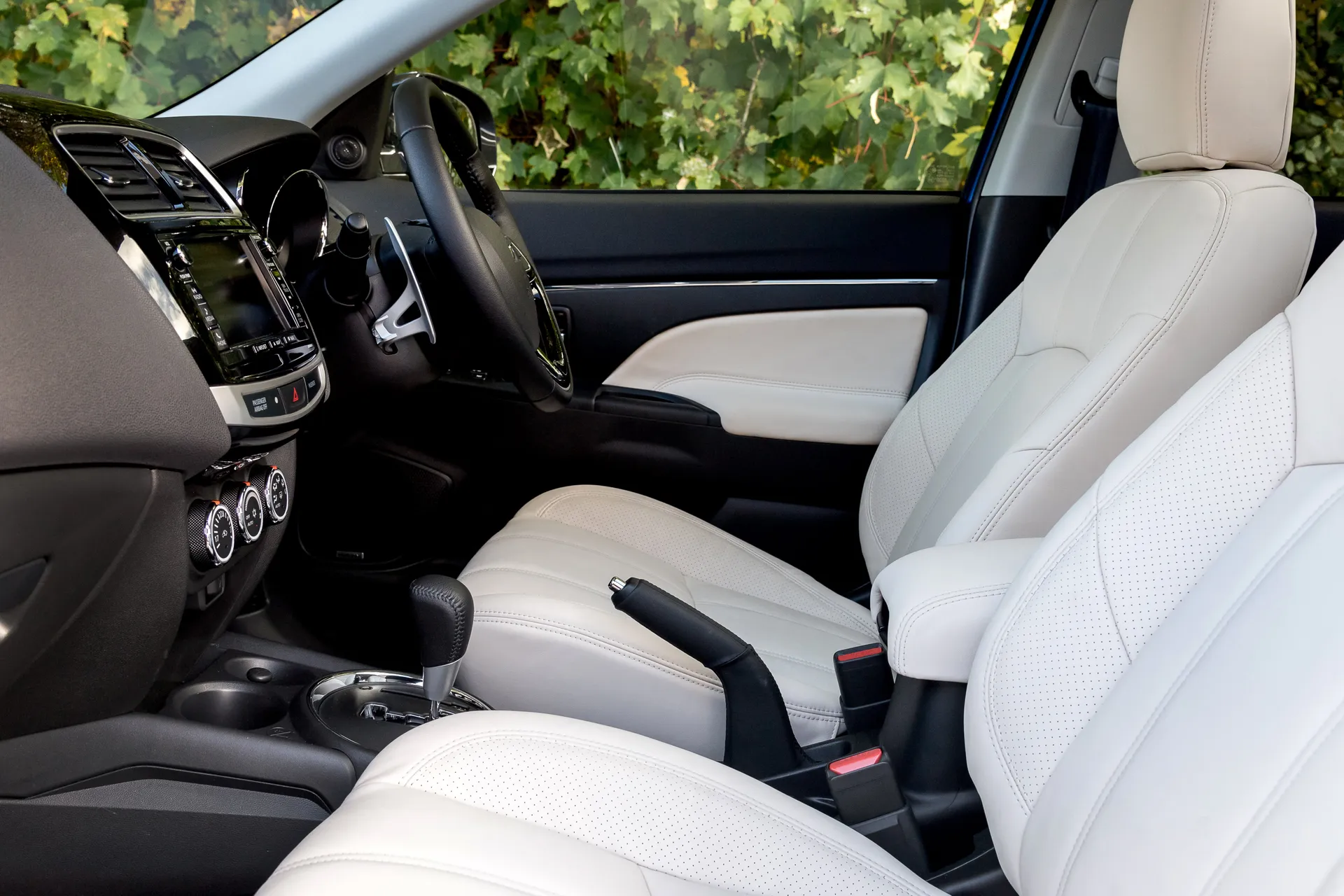
Thanks to the simplicity of the ASX’s driver environment, there really isn’t much to complain about here. Aside from a few stereo buttons and some rotary dials for the air-con system, there’s very little switchgear to get to grips with, and what little there is is logical placed and clearly marked.
The high seating position gives you a good view out - something that a lot of SUV drivers love - and to help you get comfortable, the driver’s seat has height adjustment and the steering column has rake and reach adjustment: back in the day, neither of those items were a given. Visibility is pretty good at both ends of the car thanks to big windows with slim pillars, and if you need even more help with parking manoeuvres, 3 trim gets rear parking sensors, while 4 trim gets a reversing camera.
Quality and finish
Even by the standards of the day, this is an area in which the ASX was disappointing. No sooner had you climbed into your seat than your eyeballs were met with brittle-looking, hard-edged plastics and a monotonously dreary colour scheme. And not only did it look drab, but further inspection from your fingertips only served to make matters worse. It all felt very hard-wearing and solidly put together, but there was virtually no concession to frivolity or tactility. As such, there are plenty of contemporary rivals that look and feel a good bit posher than the ASX.
Infotainment: Touchscreen, USB, sat nav and stereo in the Mitsubishi ASX
The ASX came in three different trim levels, and each one had a different level of infotainment kit. However, do bear in mind that this car was released in 2010, meaning that it predates all the latest infotainment technology, so don’t go expecting things like Apple CarPlay or Amazon Alexa from any of them.
The system in the entry-level 2 car was very basic. There was an AM/FM radio (these were the days before DAB was widespread, although DAB was introduced to the range later on down the line) and a CD player, and four speakers, and that was largely it. If you made the step up to the 3-trimmed car, it earned you another two stereo speakers and - importantly at the time for safety on the move - a Bluetooth handsfree phone connection. Both stereo systems look very basic, with buttons and dials built into the fascia, along with a small LCD display: no touchscreens here.
The range-topping 3 model, meanwhile, came with an aftermarket Kenwood stereo system that did have touchscreen functionality, along with satellite navigation. As you can imagine given the age of this tech, the graphics now look very dated by modern standards, and the menu layout and screen sensitivity aren’t exactly cutting edge, either.
Space and practicality: Mitsubishi ASX boot space
You'd expect the front seats of any car to have enough space for adults, and that’s the case in the ASX, but the rear seats aren’t quite so accommodating. Headroom is okay, but legroom is rather tight when compared with rivals, so taller adults might feel a bit hemmed in. Squeezing three across the rear row won’t be something you’ll want to do on a regular basis, either. The cabin is rather too narrow to comfortably fit three sets of shoulders in, and whoever ends up in the middle will sit on a hard seat with their feet either side of a bulky transmission tunnel.
The 442-litre boot is a decent size, although it’s nowhere near as big as you get in some rivals. There’s a bit of underfloor storage, though, and the rear seats, which are split 60/40, fold down to open up a bigger load area. They almost lie flat and flush, but not quite, leaving you with a gentle slope in your extended load floor.
Handling and ride quality: What is the Mitsubishi ASX like to drive?
"The Mitsubishi ASX isn’t the best car of its type in terms of either ride or handling, but it’s not disastrous on either front. Where it does struggle, though, is on refinement, mainly because some of the engines are rather too noisy and rough. The most popular versions have quite limited performance, too."

This is one of a number of areas in which the ASX trailed many of its rivals when it was a brand new car. To be fair, there was nothing desperately terrible about the way the ASX drove, but there was nothing awfully good about it, either.
You’ll be happier if you value comfort over fun, because the soft-ish suspension does do a half-decent job of absorbing many kinds of bumps in the road. However, it does get caught out by some others, resulting in an unceremonious whack from underneath, and compared with the smoothest-riding rivals of the day, it’s not as civilised or as settled.
It feels even less polished in the bends, too. The steering is surprisingly slow, both to react and to turn, and because it’s also quite light and feels rather artificial, it doesn’t inspire confidence in the car’s cornering ability. Neither does the pronounced body lean or the fact that the front wheels don’t grip as bullishly as those of many rivals. Nobody expects a small SUV to be some sort of scalpel-sharp sports car, but many competitors feel far tidier and more composed when changing direction than the ASX does.
What engines and gearboxes are available in the Mitsubishi ASX?
Initially, the ASX was offered with two engines, a 1.6 petrol with 115PS and a 1.8-litre diesel with 116PS. The petrol came with front-wheel drive and a five-speed manual gearbox, while the diesel got a six-speed manual and a choice of either front- or four-wheel drive.
In truth, neither engine option was hugely appealing. The petrol felt really underpowered, especially with people and luggage on board and had to be flogged mercilessly for even moderate performance. The diesel felt much brawnier, pulling much more strongly from low revs, but although it didn’t need working anywhere near as hard as the petrol, it clattered and rattled away noisily, so it wasn’t the most civilised companion.
In 2013, a 2.2-litre diesel was added to the range. It had 150PS and came with a desirable six-speed torque converter automatic gearbox. We never got to try this version, but on paper, it was actually slower than the 1.8 diesel.
An update in 2016 saw the 1.8 diesel replaced by a new 1.6-litre unit with 114PS, and again, it was available with front-or four-wheel drive. This was a shade slower than the 1.8 diesel, and the 2.2 as well, but it was a lot cleaner. Again, we never got to try this variant.
Another update in 2019 saw the entire engine range canned in favour of a single 2.0-litre petrol engine with 142PS. It was offered with front-wheel drive and a manual gearbox, or four-wheel drive and an automatic. Again, we never got to try it.
Refinement and noise levels
This was one of the main problems with the ASX. As we’ve mentioned, the diesel engines we sampled were very noisy and clattery for too much of the time, with lots of vibrations transmitted through the main controls. While the 1.6 petrol engine was quieter and smoother, it was still quite rowdy just by virtue of how hard you had to work it to make half-decent progress. The manual gearshifts had a notchy and imprecise action, while the automatic gearboxes were slightly ponderous and occasionally jerky. Wind noise wasn’t too much of an issue at motorway speeds, but road noise was rather too prevalent.
Safety equipment: How safe is the Mitsubishi ASX?
The ASX earned the full-five star rating in Euro NCAP crash tests, but don’t read too much into that. Because the testing standards become more and more difficult each year, the body now decrees that ratings expire after five years because they’re no longer relevant or representative. And, since the ASX was tested way back in 2011, this rating is well past its sell-by-date.
Sure enough, the roster of safety kit that earned the car full marks looks rather sparse by today's standards: you do get seven airbags, which is more than some contemporary cars, but your active driver aids amount to little more than anti-lock brakes, stability control and hill start assist.
MPG and fuel costs: What does a Mitsubishi ASX cost to run?
"Official fuel economy is not the ASX’s strong suit, but it does tend to return somewhere close to those figures in the real world, which isn’t something you can say of many rivals. The car should be very reliable, too."
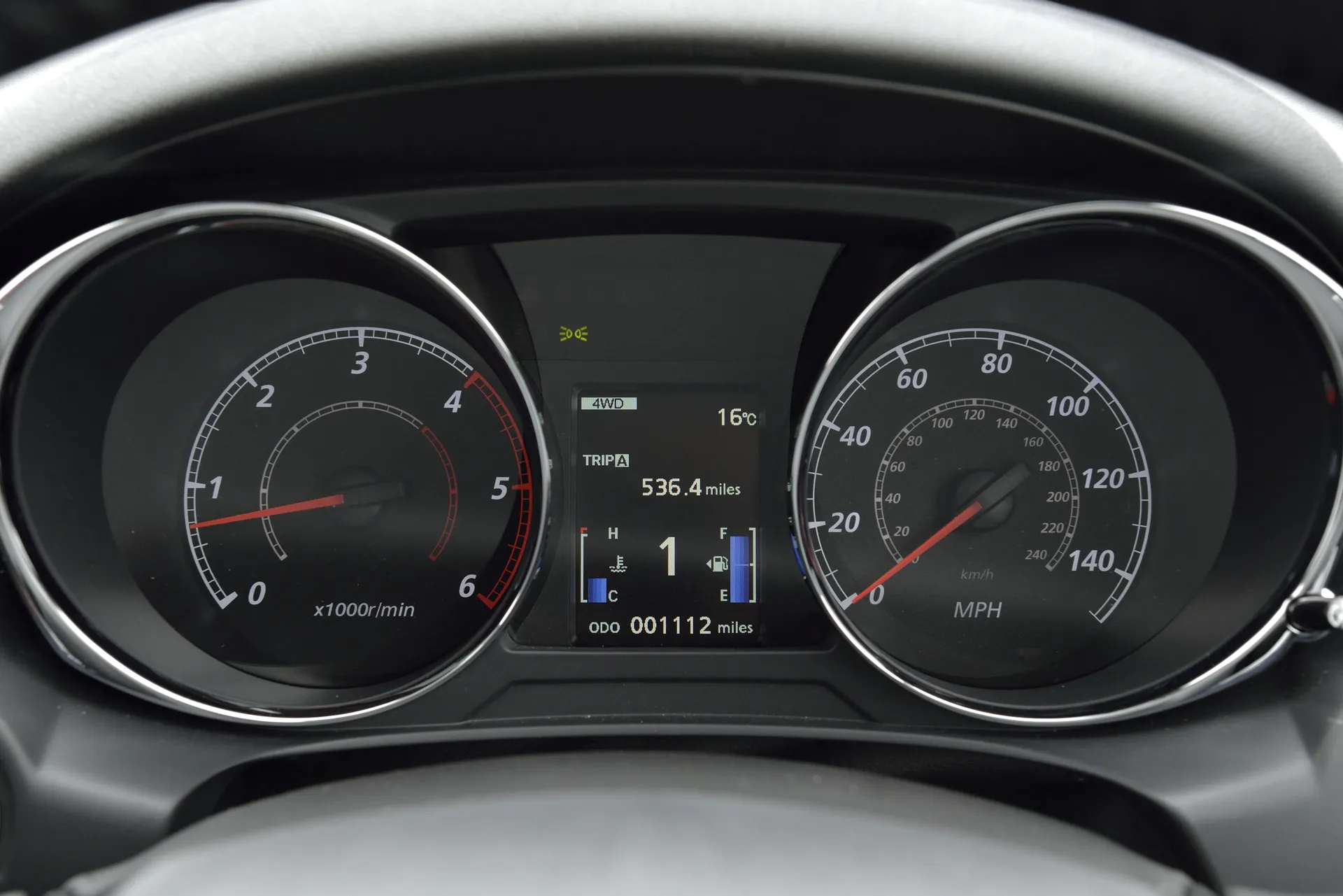
This is another area in which the ASX struggles in comparison to rivals, particularly with the petrol versions, which is largely because while those rivals use lower-capacity turbocharged engines, the Mitsubishi opts for naturally aspirated petrol engines with larger cubic capacities.
The early 1.6 petrol returned 47mpg according to the official NEDC figures of the time, while the 1.8 diesel returned 56mpg in front-wheel-drive form and 54mpg with all-wheel drive. The 2.2 diesel returned just shy of 49mpg.
While the 1.8 diesel was the most efficient engine choice up to this point, it was replaced in 2016 by a turbocharged 1.6-litre diesel that was even more efficient. Sure, it wasn’t as brawny, but it compensated with fuel economy of 61mpg in manual form, and 56mpg when combined with four-wheel drive.
The 2.0-litre petrol engine introduced during the 2019 facelift looks fairly hopeless when it comes to the official figures, returning 37mpg in manual, front-wheel-drive form, and 34mpg with four-wheel drive and an automatic. However, do bear in mind that some of that difference will be accounted for by the switch from NEDC testing protocols to WLTP ones, rather than differences in real-world fuel economy.
How reliable is the Mitsubishi ASX?
Mitsubishi has a very decent record in the reliability stakes, and that’s reflected in the firm’s performance in the latest HonestJohn.co.uk Satisfaction Index. The Japanese brand was rated as the 10th most reliable out of the 29 carmakers in the survey, indicating that trouble doesn’t happen too regularly, and when it does, it’s reasonably easy and affordable to fix. However, in the overall satisfaction rankings, the brand finished 27th of 29, so reliability aside, it must have suffered some pretty poor scores. It’s also worth remembering that used versions will no longer be covered by their original three-year warranty.
Insurance groups and costs
Every variant of every car gets placed in a particular insurance group by the ABI (Association of British Insurers), and this partly governs how much it will cost to cover. These groups range from group 1 at the cheapest end of the spectrum, to group 50 at the most expensive end. Groupings for the ASX range from 13 for the lowest-powered 1.6 petrol models, right up to group 25 for the most powerful 2.2 diesel with four-wheel drive and a high trim level. Most of the other variants sit between groups 18 and 20. That means premiums shouldn’t be too steep on most versions.
VED car tax: What is the annual road tax on a Mitsubishi ASX?
If the used Mitsubishi ASX you’re considering was registered on or after April 1st 2017, then it’ll be taxed according to the latest VED (Vehicle Excise Duty) regulations, which commands a flat rate of £180 for all petrol and diesel cars. Cars that cost more than £40,000 when new are subject to a hefty surcharge on top of that for a period of five years, but this doesn’t apply to any variant of the ASX.
Any car registered before that date, meanwhile, will be taxed according to the old regulations, in which the amount you pay is governed by the CO2 emissions of your car, and that results in some huge disparity. By coincidence, most of the petrol-powered versions pay the same £180 per year, as do many of the 1.8 diesels. Beware, though: while some of the two-wheel drive diesels are clean enough that you pay just £35 per year, some of the four-wheel drive variants can go as high as £200, while annual tax bills on some of the 2.2 diesels can reach as high as £240. When browsing used cars, it’s definitely worth a quick online check using the registration mark of any prospective purchase to be sure of what you’re looking at.
How much should you be paying for a used Mitsubishi ASX?
"When the ASX was new, it was no great shakes compared with contemporary rivals of the day, and it didn’t save you much cash, either. Now, though, as a used car, it’s cheap enough that it makes rather more sense."
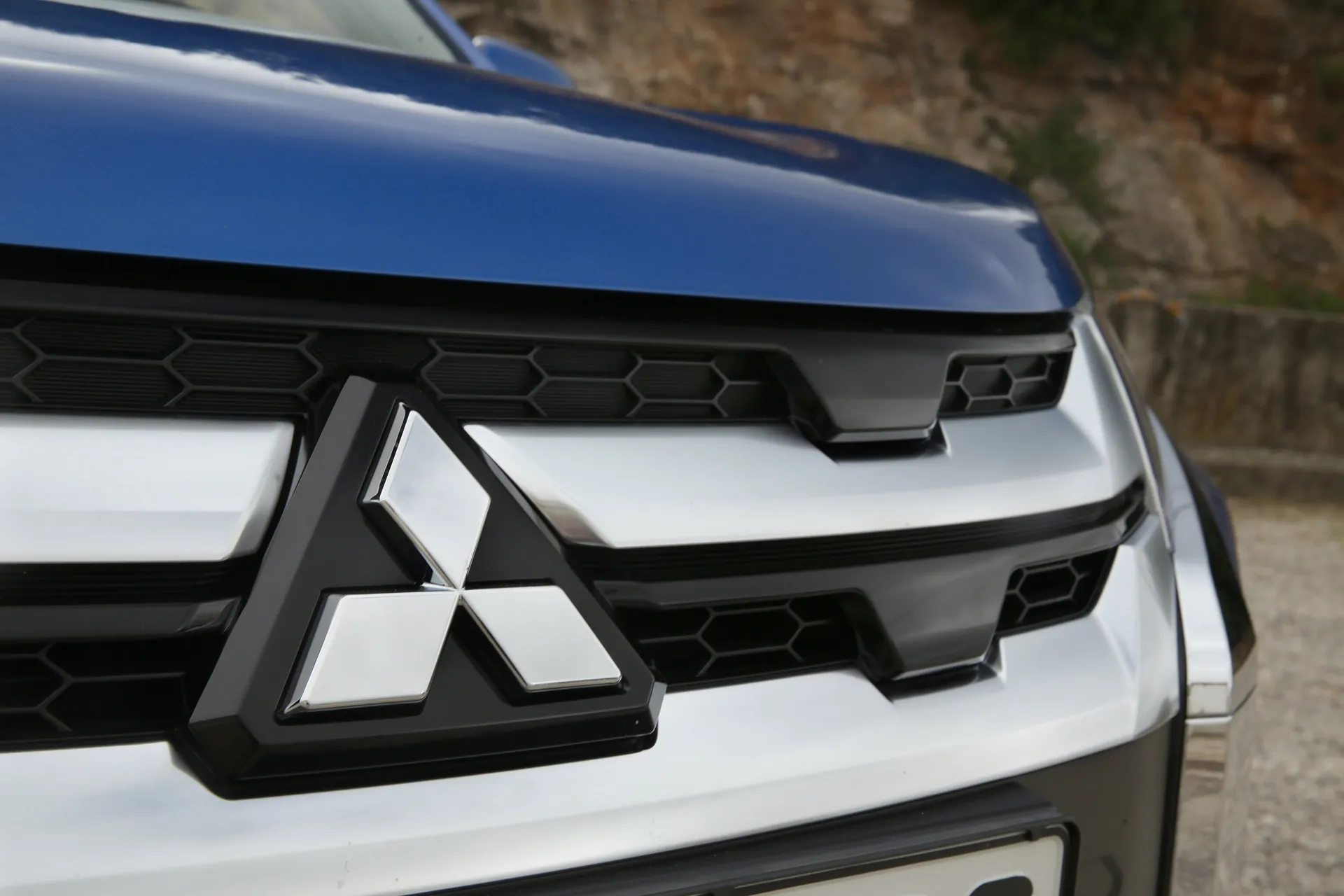
At the time of writing, the oldest ASXs in our listings were coming in at around £8,000-£11,000, but these examples were far from ancient, coming from between 2016 and 2018, and with fewer than 50,000 miles on the clock.
That means these cars will have plenty more useful motoring left in them yet, and for a bargain price. These were mainly 1.6 petrols of varying trim levels, but there were a couple of four-wheel drive diesels going for that kind of money as well, which might be tempting for folk who want all-weather capability at an affordable price tag.
Meanwhile, thirteen or fourteen grand is enough to put you in a facelifted model from 2019 or later, which had smarter looks.
Trim levels and standard equipment
The ASX’s specifications may look a little basic by modern standards, but when you bear in mind the age of the car, they’re really not bad at all. The entry-level 2 version comes with remote locking, 16-inch alloy wheels, manual air-conditioning and all-round electric windows, and that’s on top of the infotainment and safety stuff we mentioned earlier. Upgrading to 3 trim adds smarter looks thanks to 17-inch alloys, privacy glass, front foglamps, and chrome trims for the grille and windowline, while you also get rear parking sensors, climate control, cruise control, heated front seats, keyless entry, leather coverings for the steering wheel and gear lever, plus automatic lights and wipers.
Initially, 4 trim was the range-topper and added leather upholstery and a reversing camera. Later on, a higher-grade 5 trim was introduced, which brought upgraded leather, LED ambient lighting and heated rear seats.
A variety of oddly-named special editions were available at various points of the car’s life, too, which offered elevated equipment levels for a knock-down price.
Later on in the car’s life, the range was trimmed down to just one model, called the Juro, and a Black Edition car was added a short time later. And during the 2019 facelift, trim levels were revised one again to include Dynamic and Exceed.
Ask the heycar experts: common questions
Is the Mitsubishi ASX a good car?
Is the Mitsubishi ASX an SUV?
Is the Mitsubishi ASX practical?
Get our latest advice, news and offers
Keep me updated by email with the latest advice, news and offers from heycar.
By submitting you agree to our privacy policy
